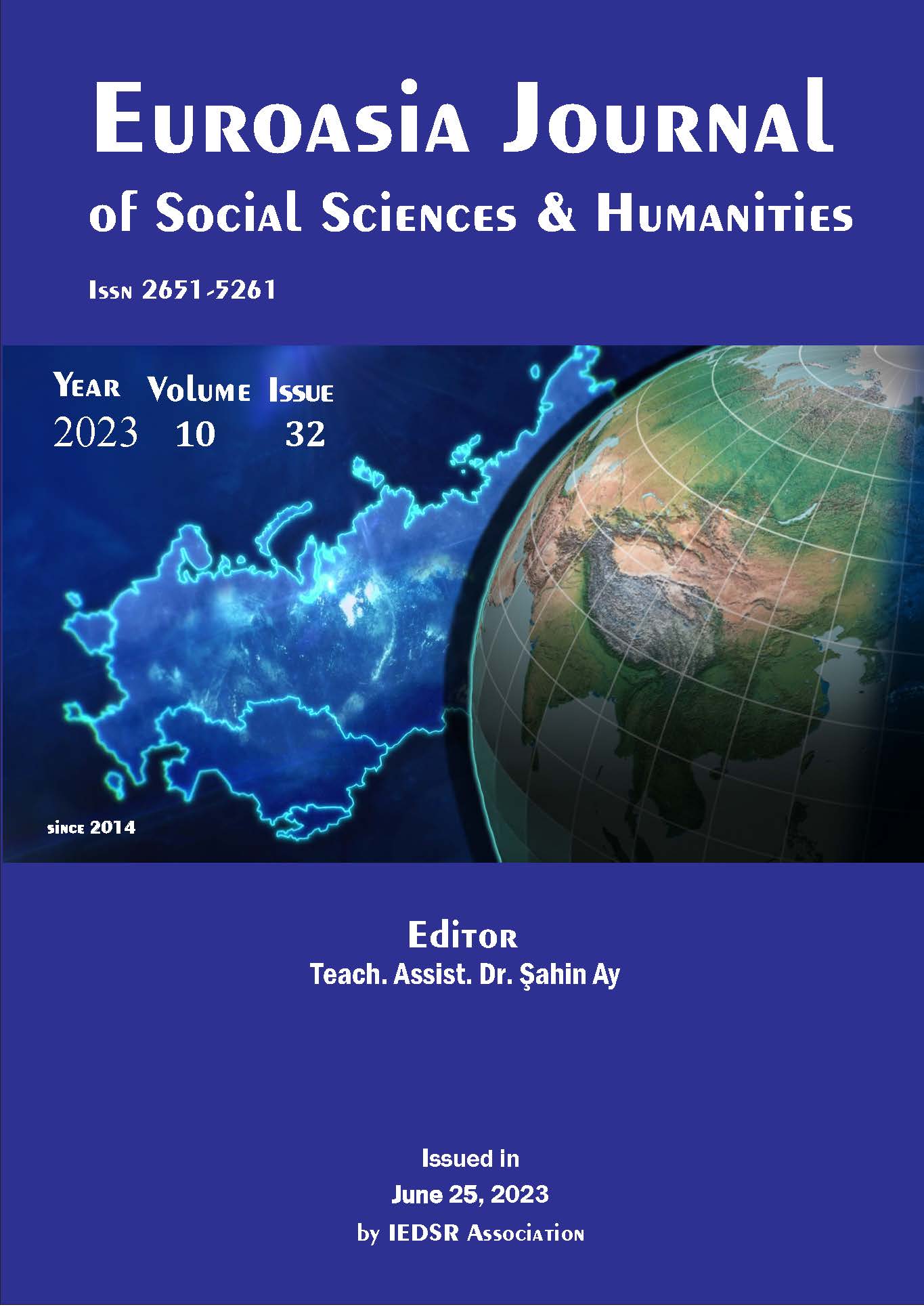Economic Effects of One Belt and One Road Project on Central Asian Countries
DOI:
https://doi.org/10.5281/zenodo.8078796Keywords:
Obor, China, Central Asia, USSR, EuropeAbstract
The One Belt One Road (OBOR) project has been resuscitated by China, the world's second economy, and is an enormous project that has the prospective to appearance the global economy. Central Asian countries, which have rich energy resources, achieved their independence due to the dissolution of the Soviet Union (USSR) in 1991 and became an area of attentiveness for the world, attracting attention thanks to the CKD project apprenticed by China. While this project facilitates the association of China to Europe via highways and railways via Central Asia, the OBOR project has gained particular importance for these countries, which will have the opportunity to bring their natural resources to the international market thanks to the projects to be carried out. Within the scope of this project, Central Asian countries. China needs energy imports to stabilize its growing economy. Hence, it is essential for both sides to enlarge the groundwork facilities and pipelines to be built in these countries to import plentiful natural energy resources into Central Asia. As a matter of fact, it is possible to say that in a term of global economic wars, China has the power to undermine the region in order to prevent the BRG project from being launched over Central Asia. While China was trying to take precautions against the political instability arising from the region, it continued its efforts to maintain its relations with Central Asian countries within the framework of the OBOR project. In this research, the economic importance of the Central Asian countries for the OBOR project, the economic potential of these countries, the financing of the OBOR project, the connection routes for China to connect with Europe via Central Asia with this project, and the expectations from China's economic OBOR project were examined.
Downloads
References
Abdibaitova, B. (2021). Kırgızistan-Çin ilişkilerinde gelişme süreci. B. Abdibaitova içinde, Bağımsızlığın 30. Yılında Kırgız Cumhuriyeti Dış Politika ve Uluslararası İlişkiler (s. 124). Ankara: Astana yayınları.
Arslan, H. (2022). BİR KUŞAK BİR YOL PROJESİNİN FİNANSAL EKONOMİK BOYUTU:. İSTABUL TİCARET ÜNİVERSİTESİ FİNANS ENSTİTÜSÜ FİNANS ANABİLİM DALI FİNANSAL EKONOMİ DOKTORA PROGRAMI, 54.
Avcıl, S. (2022). Bir Kuşak Bir Yol Projesi’nde Orta Asya Ülkelerinin Konumu ve Önemi. INTERNATIONAL CONFERENCE ON EURASIAN ECONOMIES (s. 134). istanbul: Prof. Dr. Kenan Aydın.
Aydın, P. D. (2022). Bir Kuşak Bir Yol Projesi’nde Orta Asya Ülkelerinin Konumu ve Önemi . INTERNATIONAL CONFERENCE ON EURASIAN ECONOMIES, 133.
Barotov, O. (2021). TACİKİSTAN DIŞ POLİTİKASINDA ÇOK YÖNLÜLÜK ARAYIŞLARI VE ÇİN HALK CUMHURİYETİ İLE İLİŞKİLER. BURSA ULUDAĞ ÜNİVERSİTESİ SOSYAL BİLİMLERİ ENSTİTÜSÜ, 192.
Bayraç, H. N. (2021). Bir Kuşak Bir Yol Projesi ve Ekonomik Etkileri. Alanya Akademik Bakış Dergisi, 1357.
Budulgan, S. A. (2020). ÖZBEKİSTAN’IN JEOPOLİTİK ÖNEMİ. Asya Araştırmaları Dergisi, 177.
Çakan, H. (2022). CHINA IN CENTRAL ASIA OPPORTUNITIES AND RISKS OF EMERGING CHINESE HEGEMONY FOR REGIONAL STATES. Department of International Relations İhsan Doğramacı Bilkent University, 72.
Imomnazar, I. (2018). Impact of «One Belt, One Road» initiatives to the economy of Central Asian countries. International Journal of Business and Economic Development , 32.
Jafarli, İ. (2021). ÇİN’İN “TEK KUŞAK – TEK YOL” PROJESİ BAĞLAMINDA BÖLGE ÜLKELERİYLE KARŞILIKLI İLİŞKİLERİNİN GÜNCEL DURUMU VE MÜMKÜN GELİŞİM POTANSİYELİ: KAZAKİSTAN, ÖZBEKİSTAN VE AZERBAYCAN ÖRNEKLERİ. MARMARA ÜNİVERSİTESİ SOSYAL BİLİMLER ENSTİTÜSÜ, 65.
Karimi, K. (2018). ÇİN’İN ORTA ASYA’DA EKONOMİK DİPLOMASİSİ: YENİ İPEK YOLU PROJESİ., (s. 63).
Kopuk, E. (2021). Bir Kuşak Bir Yol Projesi ve Ekonomik Etkileri. Alanya Akademik Bakış Dergisi, 1356.
Küçük, K. (2020). ÖZBEKİSTAN’IN BÜYÜK GÜÇLERLE İLİŞKİLERİ. KIRGIZİSTAN-TÜRKİYE MANAS ÜNİVERSİTESİ SOSYAL BİLİMLER ENSTİTÜSÜ, 17.
Myradov, D. (2017). 2000’LERDEN İTİBAREN ÇİN’İN YÜKSELİŞİNİN ORTA ASYA’DAKİ ETKİLERİNE REALİST VE LİBERAL BİR YAKLAŞIM: TÜRKMENİSTAN VE KAZAKİSTAN ÖRNEKLERİ. MARMARA ÜNİVERSİTESİ SOSYAL BİLİMLER ENSTİTÜSÜ ULUSLARARASI İLİŞKİLER ANABİLİM DALI, 95.
Omunkulov, O. (2020). KUŞAK VE YOL PROJESİ BAĞLAMINDA ÇİN-ORTA ASYA. Bağımsız Araştırmacı, otabekomon@gmail.com, ORCID: 0000-0001-8706-7635, 84.
Sarı, K. (2019). ÇİN HALK CUMHURİYETİ’NİN ENERJİ GÜVENLİĞİNDE ORTA ASYA ÖRNEĞİ. BOLU ABANT İZZET BAYSAL ÜNİVERSİTESİ SOSYAL BİLİMLER ENSTİTÜSÜ, 91.
Tezer, H. (2018). 21. Asırda İpekyolu Ekonomileri ve Türk Dünyasının Ekonomik Gelişim Süreci. https://www.researchgate.net/publication/327107761, 16.
Tok, U. (2021). ÇİN HALK CUMHURİYETİ’NİN KUŞAK VE YOL GİRİŞİMİ’NİN TÜRKİSTAN JEOPOLİTİĞİ ÇERÇEVESİNDE ANALİZİ. T.C.GİRESUN ÜNİVERSİTESİ SOSYAL BİLİMLER ENSTİTÜSÜ ULUSLARARASI İLİŞKİLER ANABİLİM DALI, 91.
Türk, F. (2017). Tacikistan’da Dış Güçler: Rusya, Çin, Amerika Birleşik Devletleri Avrupa Birliği, İran ve Türkiye. Elektronik Siyaset Bilimi Araştırmaları Dergisi, 86.
Downloads
Published
How to Cite
Issue
Section
License
Copyright (c) 2023 EUROASIA JOURNAL OF SOCIAL SCIENCES & HUMANITIES

This work is licensed under a Creative Commons Attribution-NonCommercial 4.0 International License.

